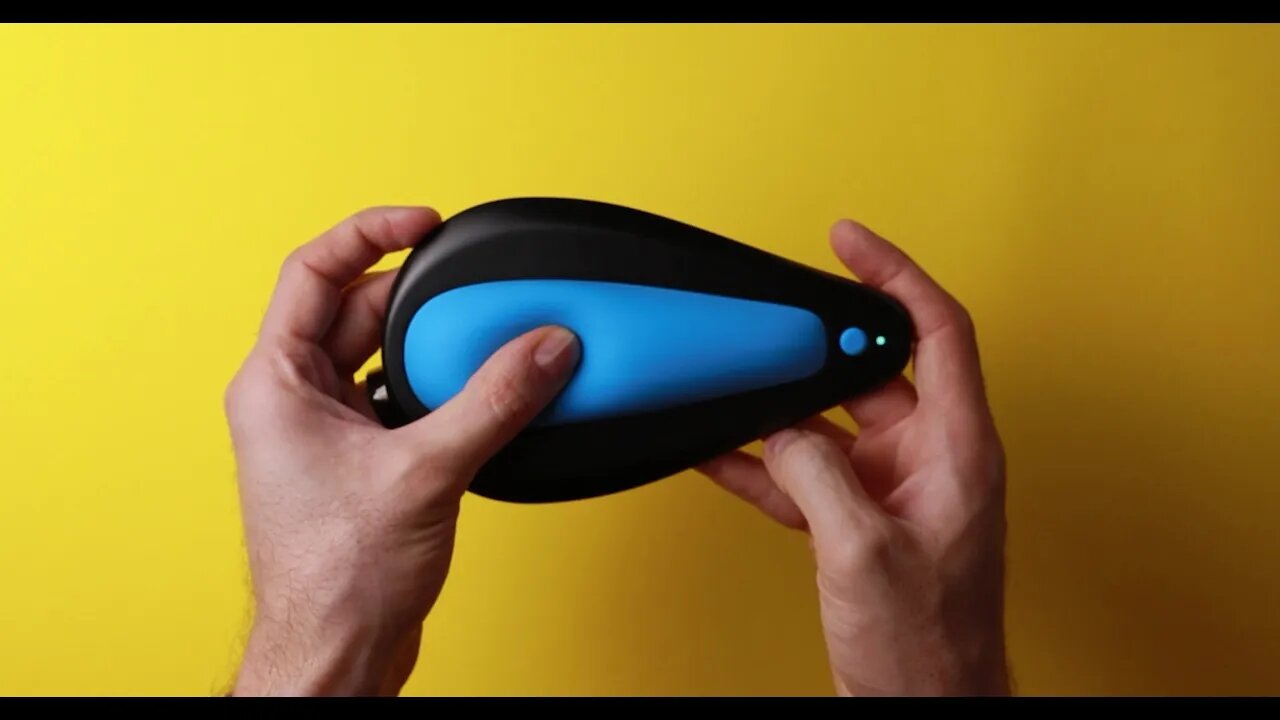Premium Only Content

Fix Premature Ejaculation By Playing Games? - kGoal Boost
kGoal Boost: https://bit.ly/kGoalBoost
OF & Other Useful links: https://linktr.ee/baseems
kGoal Boost is a revolutionary, interactive training system (device + app) that measures Kegel exercises when you're sitting on it (with no insertion). It offers a unique combination of workout guidance, exercise tracking, biofeedback and games to help you get more out of your pelvic floor exercise and do it more consistently.
Pelvic floor exercise is important for men
The pelvic floor is a network of muscles at the base of the abdomen that plays a crucial role in many aspects of healthy living. Whether you’re trying to boost your sexual performance, improve bladder control, or just set yourself up for healthy aging, Kegel exercise can be a key part of the equation.
Why Kegel exercises matter
Location of female pelvic floor muscles
Open pop-up dialog box
Many factors can weaken your pelvic floor muscles, including pregnancy, childbirth, surgery, aging, excessive straining from constipation or chronic coughing, and being overweight.
You might benefit from doing Kegel exercises if you:
Leak a few drops of urine while sneezing, laughing or coughing (stress incontinence)
Have a strong, sudden urge to urinate just before losing a large amount of urine (urinary urge incontinence)
Leak stool (fecal incontinence)
Kegel exercises can also be done during pregnancy or after childbirth to try to improve your symptoms.
Kegel exercises are less helpful for women who have severe urine leakage when they sneeze, cough or laugh. Also, Kegel exercises aren't helpful for women who unexpectedly leak small amounts of urine due to a full bladder (overflow incontinence).
How to do Kegel exercises
To get started:
Find the right muscles. To identify your pelvic floor muscles, stop urination in midstream. Once you've identified your pelvic floor muscles you can do the exercises in any position, although you might find it easiest to do them lying down at first.
Perfect your technique. To do Kegels, imagine you are sitting on a marble and tighten your pelvic muscles as if you're lifting the marble. Try it for three seconds at a time, then relax for a count of three.
Maintain your focus. For best results, focus on tightening only your pelvic floor muscles. Be careful not to flex the muscles in your abdomen, thighs or buttocks. Avoid holding your breath. Instead, breathe freely during the exercises.
Repeat three times a day. Aim for at least three sets of 10 to 15 repetitions a day.
Don't make a habit of using Kegel exercises to start and stop your urine stream. Doing Kegel exercises while emptying your bladder can actually lead to incomplete emptying of the bladder — which increases the risk of a urinary tract infection.
When to do your Kegels
Make Kegel exercises part of your daily routine. You can do Kegel exercises discreetly just about any time, whether you're sitting at your desk or relaxing on the couch.
When you're having trouble
If you're having trouble doing Kegel exercises, don't be embarrassed to ask for help. Your doctor or other health care provider can give you important feedback so that you learn to isolate and exercise the correct muscles.
In some cases, vaginal weighted cones or biofeedback might help. To use a vaginal cone, you insert it into your vagina and use pelvic muscle contractions to hold it in place during your daily activities. During a biofeedback session, your doctor or other health care provider inserts a pressure sensor into your vagina or rectum. As you relax and contract your pelvic floor muscles, a monitor will measure and display your pelvic floor activity.
When to expect results
If you do Kegel exercises regularly, you can expect results — such as less frequent urine leakage — within about a few weeks to a few months. For continued benefits, make Kegel exercises a permanent part of your daily routine.
Just like erectile dysfunction, premature ejaculation (PE) can severely affect your sexual health. But there’s good news: If you do premature ejaculation exercises to delay ejaculation regularly, you’ll have better control during intercourse.
Here now are some exercises for delayed ejaculation. While these ejaculatory control exercises and techniques aren’t lifelong treatments, they may help to delay orgasm so that you and your partner can make love multiple times a day for longer.
Kegel Exercise for Premature
Doing a kegel exercise for premature ejaculation will help strengthen the ischiocavernosus and bulbocavernosus muscles which are located in the pelvic floor muscle area. These are found around the penis and are active when it becomes aroused.
These are the best sexual exercises for premature ejaculation. Consider doing pelvic floor exercises first before looking for another treatment. Kegel exercises are easy and won’t require specialized equipment.
Here now are exercises that target the tight pelvic floor muscles that can prevent premature ejaculation.
-
 0:47
0:47
Male Enhancement Channel
1 year agoWhy Do You Have a Weak Erection #shorts
675 -
 1:12:40
1:12:40
Wendy Bell Radio
12 hours agoPet Talk With The Pet Doc
54.2K32 -
 LIVE
LIVE
Biscotti-B23
1 hour ago🔴 LIVE TOURNAMENT PRACTICE ⚔ TOP 100 RANK 👑 DEMON SLAYER HINOKAMI CHRONICLES 2
52 watching -
 LIVE
LIVE
FusedAegisTV
16 hours agoStreet Fighter 6 FINALS, CS2 Semifinals | $1,250,000 | Riyadh, Saudi Arabia EWC 2025 !estv
149 watching -
 40:42
40:42
SouthernbelleReacts
1 day ago $0.10 earned😂 American Pie (1999) Reaction | Iconic Teen Comedy, High School Chaos & 90s Nostalgia 🥧
33.5K4 -
 5:05:02
5:05:02
LumpyPotatoX2
6 hours agoBecome a HellDiver Today - #RumbleGaming
47.8K1 -
 4:52:02
4:52:02
Midnight In The Mountains
8 hours agoGaming w/ PER·SE·VER·ANCE | Sassy Saturday Fortnite | with the Midnights!
35.1K3 -
 6:22:35
6:22:35
shyboyking
6 hours agoThe Bots Of The Bots !!!😎
55.6K2 -
 24:06
24:06
True Crime | Unsolved Cases | Mysterious Stories
5 days ago $0.27 earnedShe Traveled Alone… and Never Came Back – 5 Mysterious Unsolved Cases (Part 6)
38.6K6 -
 27:23
27:23
Clickbait Wasteland
20 hours ago $0.09 earnedAsking New Yorkers Who They Support For Mayor: Staten Island
35.8K20